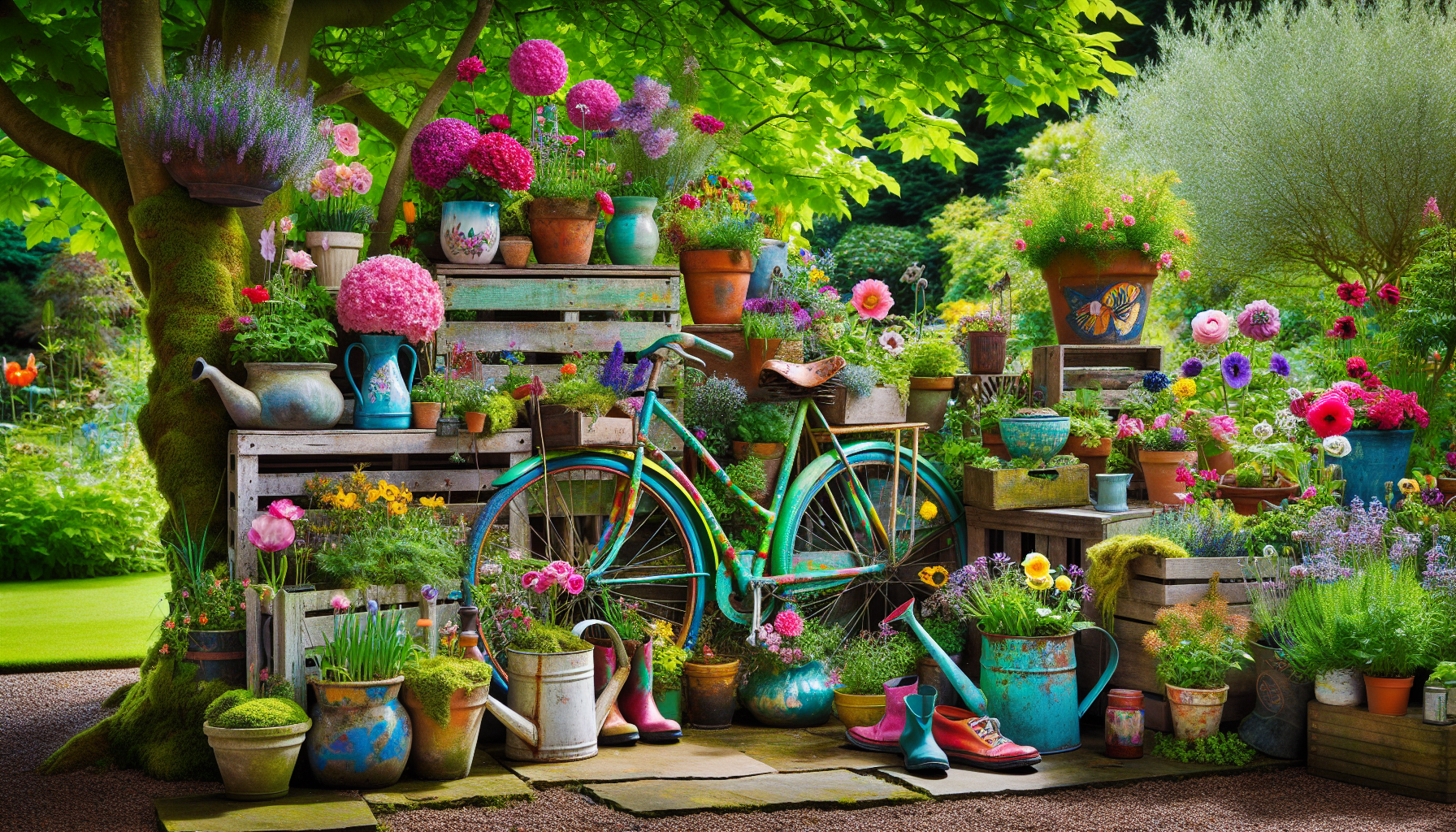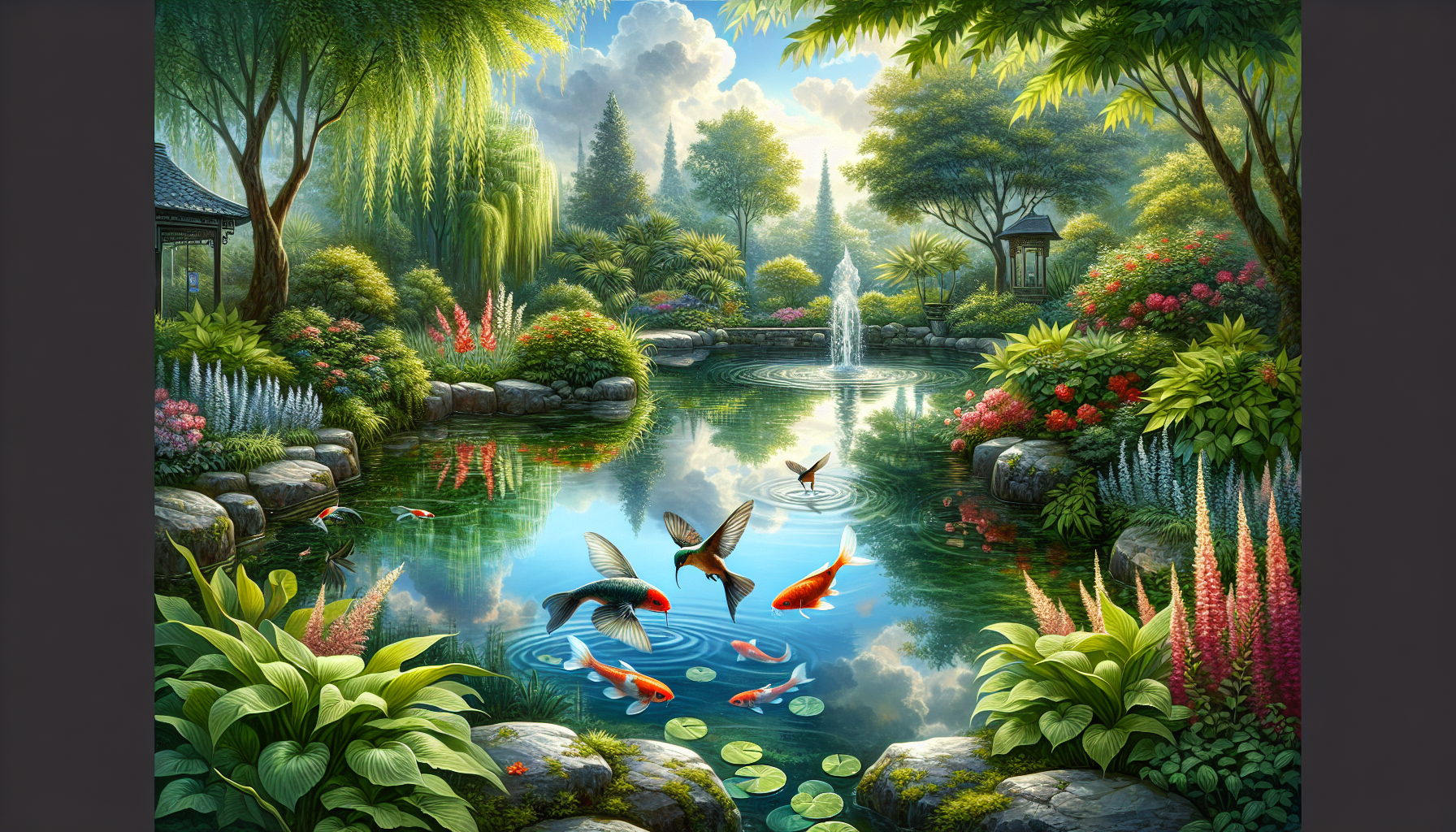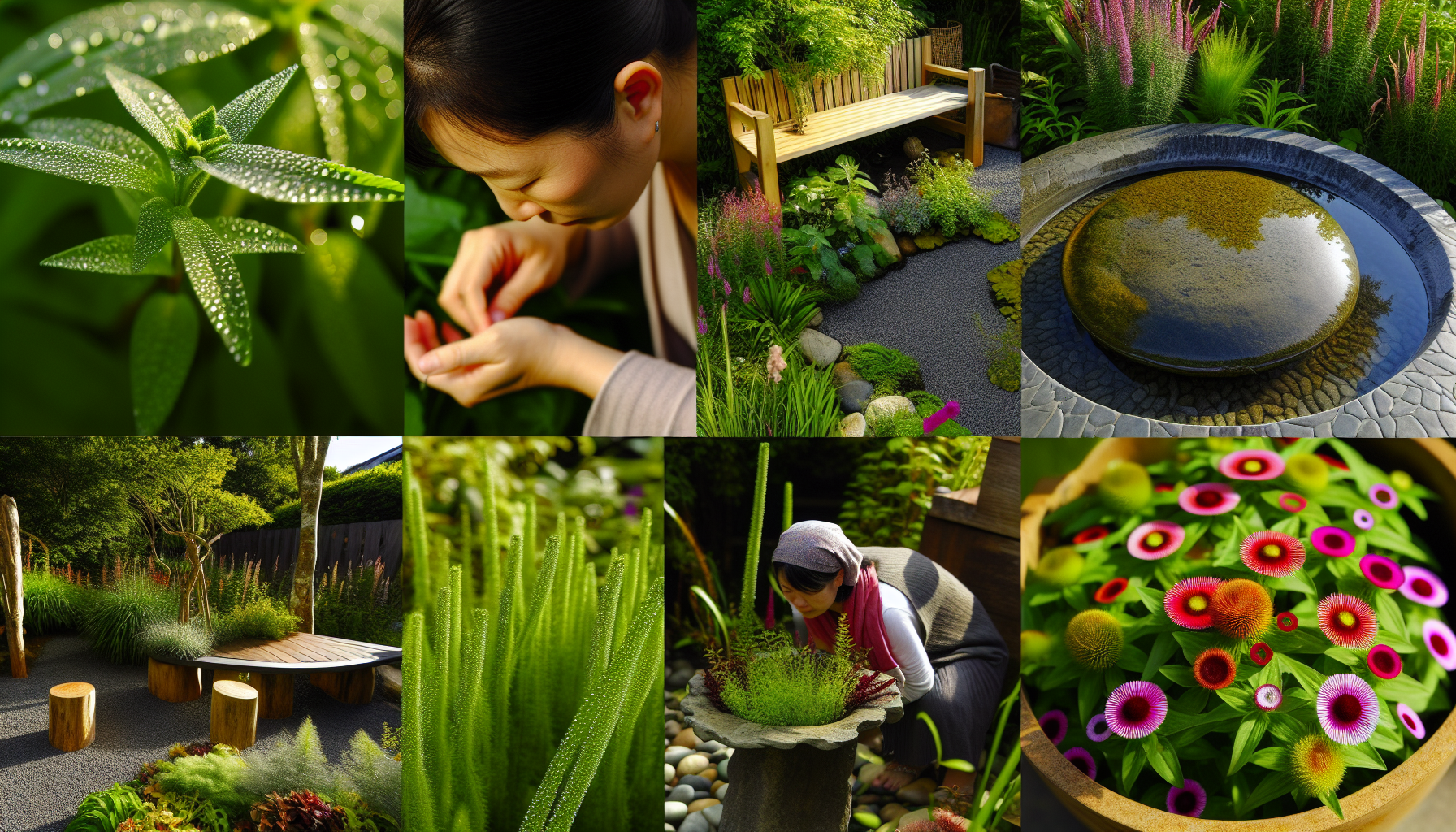Are you looking to break away from the ordinary and dive into the world of creative gardening? By integrating smart, innovative techniques, such as upcycled garden art and edible landscapes, learn how you can transform an average garden into an extraordinary one. This guide offers foolproof methods and inspiring ideas for gardeners ready to push the limits of their green thumbs. Expect to find practical advice for making every plant and inch count—with results that speak for themselves.
Key Takeaways
-
Innovative planting techniques, including raised beds and efficient planning, can significantly enhance garden productivity and yield.
-
Upcycling everyday items into creative containers and garden art, as well as adopting edible landscapes, merges functionality with aesthetic appeal in gardening.
-
Integrating sensory experiences such as sight, smell, touch, and sound, alongside maximizing limited spaces using vertical gardening and crop rotation, can lead to a more engaging and sustainable garden.
Innovative Planting Techniques
When it comes to creative gardening, it’s all about refining how you grow your vegetables. Moving away from haphazard planting and embracing efficient planning and successful cultivation can make a world of difference. Opting for raised beds, for instance, is a smart choice. They are not only efficient and easy to maintain but also significantly enhance your garden’s productivity within a confined space.
Innovative planting techniques can take your garden from ordinary to extraordinary. By optimizing space, improving plant health, and increasing overall yield, you can truly unleash your garden’s potential. But remember, choice, timing, and technique all play a large role in this process. Work to develop a comprehensive plan that takes into account plant varieties, timing, and techniques. Adopting this approach lays the groundwork for a bountiful fall harvest.
The Art of Upcycling: Creative Containers and Garden Art

Upcycling is a fantastic way to add a unique touch to your outdoor space. This involves repurposing old items into practical and aesthetic elements for your garden. Some examples of upcycling ideas for your garden include:
-
Using an old bathtub as a planter
-
Turning a broken chair into a home for succulents
-
Transforming old tires into flower beds
-
Repurposing wine bottles as garden edging
-
Creating a vertical garden using old pallets
The options are endless and only limited by your creativity; for additional information, explore various resources, including using a browser to access data and videos, which can expand your ideas. It’s important to take note of and save any valuable insights you come across.
Materials for outdoor garden art can vary, but using recycled materials is both environmentally friendly and creative. Some examples of materials you can use include:
-
Old jars
-
Cookie tins
-
Buckets
-
Shoes
These items can be transformed into plant pots and adorned with colors and designs to impart individuality to the garden, making them perfect for garden-themed ads and services.
You can also fashion garden art from a variety of materials like bowling balls, heater grates, and wire.
Edible Landscapes: Merging Function with Flair
Incorporating a variety of vegetables into your home garden can greatly enrich your diet and culinary experience. For instance, root vegetables like beets and radishes are not only nutritious but also relatively easy to grow, even in smaller spaces. Leafy greens such as Swiss chard and collard greens offer a continuous harvest, thriving in both full sun and partial shade. Adding cruciferous vegetables like broccoli and Brussels sprouts can provide a bountiful yield and are known for their health benefits.
Fruit-bearing plants, too, can be a rewarding addition to your garden. Consider planting berry bushes, such as blueberries and raspberries, which can be grown in the ground or containers. Melons, like watermelon and cantaloupe, are perfect for larger gardens and bring a sweet, refreshing flavor to your summer table. Don't overlook perennial fruits like rhubarb, which can provide a tart component to pies and desserts.
Herbs are a must in any home garden due to their versatility in cooking. Beyond the commonly grown basil and parsley, try cultivating lemongrass for a citrusy flavor, or dill, which is excellent for pickling and seasoning fish. Rosemary and thyme are hardy herbs that can grow well in pots, adding both flavor and fragrance to your garden.
Adding edible flowers can transform your garden into a visually stunning and gastronomically exciting space. Flowers like violas and pansies not only add a splash of color but also have a sweet, subtle flavor perfect for garnishing desserts or salads. Sunflowers, with their large, striking blooms, offer edible seeds that are rich in nutrients. Elderflower, with its delicate white blossoms, can be used to make syrups or infused into desserts and drinks for a fragrant, sweet taste. Incorporating these edible flowers into your garden not only enhances its beauty but also expands your culinary possibilities.
Water Wonders: Crafting Garden Oases

Introducing water features can transform an everyday garden into a peaceful oasis. There are numerous options to choose from, including ponds, streams, fountains, rain curtains, water walls, and more. These features can be crafted using a variety of materials such as plastic, resin, concrete, metal, marble, basalt, granite, acrylic, glass, and bamboo.
Constructing a garden pond is a great way to make parts of your garden more appealing to wildlife. A variety of depth zones, plant shelves, and a diverse selection of native plants can create a perfect environment for various wildlife species.
A water feature not only enhances the aesthetic appeal of your garden but also offers various benefits. It fosters a tranquil and serene ambiance, aids in minimizing noise pollution, attracts wildlife, and introduces dynamic elements such as sound, texture, and movement to your landscape.
Cultivating Curiosity: Engaging All Senses in the Garden

A garden offers more than just visual delight; it’s a space where all your senses can be engaged. Engaging all senses in a garden cultivates curiosity and fosters a deeper connection with nature, ultimately leading to a more immersive and enjoyable experience. By taking the time to measure the impact of these sensory experiences, you can truly appreciate the beauty of your garden.
The sense of smell can be engaged in a garden setting by establishing distinct sense zones, particularly one dedicated to smell. This can be achieved by incorporating a diverse selection of plants and flowers with potent scents to effectively stimulate the olfactory senses.
The sense of touch in a garden can also be enhanced. Incorporating soft, fuzzy plants and other vegetation with diverse textures can offer a range of tactile experiences. Choosing quality plants and materials will ensure a more enjoyable and long-lasting sensory experience in your garden.
Sound, too, is an essential part of the garden experience. Incorporating elements that produce natural sounds and adding features like:
-
a recirculating water fountain
-
wind chimes
-
bird feeders
-
a rustling bamboo screen
Using soundscapes to create a soothing auditory environment can also protect your ears from harmful noise levels.
Small Spaces, Big Impact: Maximizing Limited Garden Areas
Even if your garden isn’t large, don’t fret. Utilizing the right techniques can enable even small spaces to have a significant impact. One such technique is vertical gardening. Plants like:
-
Epipremnum aureum (pothos, devil’s ivy)
-
Anthurium
-
Orchids
-
Pole beans
-
Climbing peas
-
Vining tomatoes
are ideal for vertical gardening.
Container planting is another effective method for small spaces. By using companion planting, growing vining vegetables vertically, and positioning containers in areas with maximum sunlight, you can significantly enhance your garden’s productivity.
Many vegetables are well-suited for small-space gardens, including:
-
Basil
-
Chard
-
Eggplant
-
Hot peppers
-
Tomatoes
-
Leaf lettuce
-
Cucumbers
-
Squash
-
Peas
-
Beets
-
Radishes
-
Cherry tomatoes
-
Little Gem lettuce
-
Peppers
These vegetables and fruits require less space to grow and often thrive in container settings.
Rotating Crops for Year-Round Interest
Crop rotation is beneficial for several reasons. It not only aids in preventing soilborne pests but also contributes to replenishing soil nutrients, maintaining soil structure, and lessening the reliance on fertilizers. To implement crop rotation in home gardens, simply alter the planting location of vegetables within the garden each season.
To maintain continuous blooms and sustained year-round appeal in your garden, opt for a diverse selection of flowering plants that blossom at various points throughout the year. Including a range of plant types, like annuals, perennials, and flowering shrubs, can contribute to creating depth and variety in your garden.
Conclusion
In conclusion, creative gardening is about much more than just planting seeds and waiting for them to grow. It’s about designing a garden that is not only productive but also a sensory delight, a tranquil oasis, and a haven for wildlife. With innovative planting techniques, the art of upcycling, the creation of edible landscapes, the addition of water features, and the engagement of all senses, you can truly unlock the potential of your garden.
The journey doesn’t end here. With the knowledge you’ve gained, you can now experiment, innovate, and create a garden that tells your unique story. Remember, the only limit is your imagination. Happy gardening!
FAQs
What are the benefits of raised bed gardening?
Raised bed gardening offers better soil control, easier maintenance, and higher productivity in a confined area, making it a highly efficient gardening method.
How can I repurpose old furniture into garden art?
You can repurpose old furniture into garden art by transforming items like old bathtubs into planters or broken chairs into succulent planters. Get creative and give new life to your old furniture for your garden.
Which vegetables are suitable for an edible landscape?
Onions and garlic are suitable for an edible landscape because of their adaptability and resistance to pests.
How can I engage all senses in my garden?
To engage all senses in your garden, incorporate plants with potent scents, natural elements that produce sounds, and diverse textures in the plant selection. Enjoy creating a multi-sensory experience in your garden!
How can I maximize a small garden area?
You can maximize a small garden area by using techniques like vertical gardening and container planting. These methods help make the most of limited space.





Share and get 15% off!
Simply share this product on one of the following social networks and you will unlock 15% off!